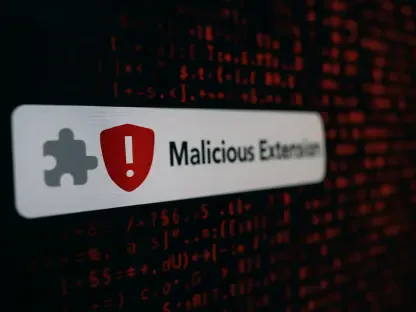In an ever-evolving digital landscape, the latest phishing attacks exploiting popular platforms such as Zoom highlight the vulnerabilities of the Decentralized Finance (DeFi) space. The story of a skilled miner falling victim to a phishing attack, resulting in a theft of over $1 million from his crypto wallet, exemplifies the increasing sophistication of these attacks. The miner, whose experience did not safeguard him from the scam, was duped through a conversation on Twitter, which led him to download a malicious Zoom application. This incident serves as yet another reminder of the evolving threats facing crypto users and the importance of stringent security measures.
The Method Behind the Attack
The Initial Contact and Phishing Setup
The experienced miner’s downfall began with an innocuous-looking Twitter conversation. An impostor posed as the CEO of a reputable crypto project, engaging the miner in a discussion that eventually led to an invitation to schedule a Zoom meeting. Such tactics represent a broader trend where attackers capitalize on the trust established through well-known platforms and personas. By using sophisticated social engineering techniques, the attacker managed to convince the victim to download what appeared to be a legitimate Zoom app. However, the link provided led to a bogus domain, such as us04-zoom[.]us, which escaped immediate detection.
Upon clicking the malicious link and installing the fake Zoom app, the miner unknowingly embedded malware into his system. This malware targeted his crypto wallet credentials and private keys, which enabled the hacker to access and eventually empty the miner’s crypto assets. By the time the miner became aware of the attack, his Twitter account had been compromised, and his wallet had been cleaned out, highlighting the speed and efficiency with which modern phishing attacks can unfold.
Analyzing the Malware’s Impact
Once the malware took hold, it executed its primary function with chilling efficiency. By capturing sensitive information, including wallet credentials and private keys, the malware essentially handed over the keys to the miner’s crypto vault to the attackers. These details were then relayed to the hacker’s server, where the actual theft of the crypto assets occurred. The miner was left in a state of shock, coming to terms with not just the financial loss but also the realization that his online security had been catastrophically compromised.
The specific malware used was designed to remain undetected by standard antivirus programs, showcasing the advanced nature of these attacks. The impersonator not only replicated a trusted platform but also leveraged a highly convincing script that exploited human tendencies to trust familiar names and formats. In modern cybercrime, such malware sophistication means that even the most security-conscious individuals can sometimes fall prey to attacks if they do not take extensive precautions.
Preventative Measures and Lessons Learned
Importance of Vigilance and Verification
This incident marks a significant learning point for all cryptocurrency users operating within the DeFi ecosystem. Experts now stress the critical importance of verifying the authenticity of any link or application download. Users should cross-reference URLs and ensure that direct communication channels are used to authenticate requests from known contacts or institutions. Additionally, running comprehensive security scans on any downloaded files, and not solely relying on default antivirus software, can significantly reduce the risk of malware installation.
Enabling two-factor authentication (2FA) across all crypto-related accounts adds another layer of security. While it may seem like an additional step, 2FA can act as a crucial barrier against unauthorized access if malicious software does compromise login credentials. Keeping a skeptical mindset is equally important, both in digital communications and file downloads. Users should treat unsolicited messages, even from well-acquainted contacts, with a level of suspicion that prompts secure and verifiable interactions.
Strengthening DeFi Security Practices
In the rapidly changing digital world, the most recent phishing scams targeting popular platforms like Zoom underscore the susceptibilities within the Decentralized Finance (DeFi) sector. An illustrative case involves an experienced miner who was deceived by a phishing attack, culminating in the theft of over $1 million from his cryptocurrency wallet. Despite his expertise, the miner was tricked through interactions on Twitter, leading him to download a compromised Zoom application. This application was malicious, and once installed, it compromised his crypto wallet. This episode is a stark reminder of the growing sophistication of cybercriminals and their strategies. It highlights the urgent need for robust security protocols to protect crypto users. In light of such incidents, it becomes clear that no one, regardless of their experience, is completely immune to these threats. Hence, continual awareness and stringent security practices are crucial in safeguarding digital assets in the DeFi landscape.








